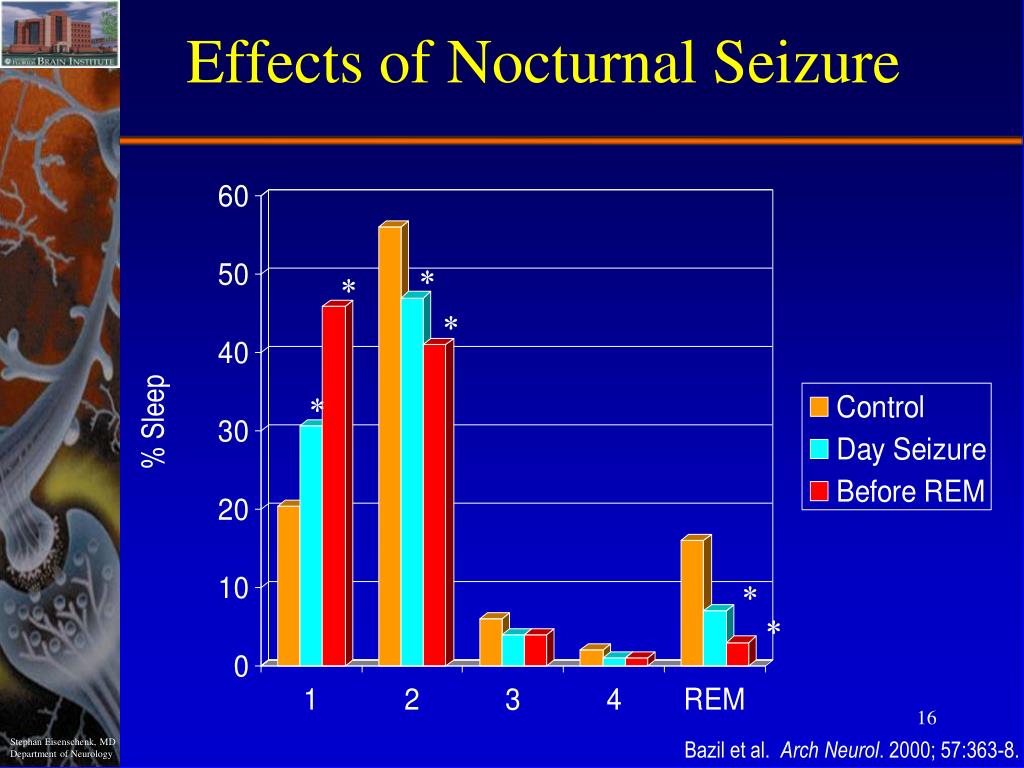

The events did not appear stereotyped in appearance and there was amnesia. The patient was subsequently admitted to the EMU to assist in the classification of events and rule out epilepsy.ĭuring the 3-day EMU admission, two typical events were captured out of sleep, the first one characterized by awakening from sleep with confusion associated with an auditory hallucination and the second one awakening from sleep with confusion trying to speak with her husband.


Brain magnetic resonance imaging with and without contrast was performed and was normal. Less likely, they were thought to represent epileptic seizures or peduncular hallucinosis from a brainstem or thalamus lesion. The complex nocturnal visual hallucinations were thought to most likely reflect hypnopompic (sleep to wake transition) and hypnagogic (wake to sleep transition) hallucinations associated with several non-rapid eye movement sleep (NREM) parasomnias, such as confusional arousals, night terrors, and somnambulism. Physical examination was unremarkable and body mass index was 22.9 kg/m 2. She had no other past medical history and was on no medications. There were no daytime spells, incontinence, tongue biting, episodes of loss of time, or other spells suspicious of unwitnessed seizure activity. Other triggers included sleep deprivation and stress. The spells sometimes appeared triggered by her husband getting into bed and possibly causing her to arouse. The patient was amnestic at times of the events. The events lasted less than 1 min, occurred 3–4 times per week, and typically occurred once per night during the first half of the night. Her husband would try to convince her that the hallucinations were not real, after which she would fall back asleep. She was confused upon awakening from these episodes. Rarely, she would walk out of the bedroom. Generally, during these episodes the patient would scream, appear frightened with her eyes open, and sometimes verbalize “Oh my God, oh my God, don't you see them?” Motor manifestations such as chewing, grinding teeth, lip smacking, or repetitive squeezing of her arm or leg with her right hand were occasionally noted. The images were complex and well formed, tended to be in black/white and could appear anywhere in the visual field. She would awaken and see images that were somewhat threatening but not stereotyped the images tended to follow certain themes such as her husband's face being visually altered, a stranger being in her bed, or seeing chairs around the bed. At the age of 22, she started having episodes of visual hallucinations 1–2 h after falling asleep, between 12 and 2 a.m. The patient reported a long history of somniloquy (sleep-talking), bruxism, somnambulism (sleep-walking) as a child, and vivid dreams. This case highlights the challenging task of finding a definitive diagnosis for complex nocturnal events associated with sleep.Ī 29-year-old woman was referred for evaluation of hallucinations and abnormal behaviors during sleep. During the stay, several events were captured on electroencephalography (EEG) and video leading to a conclusive final diagnosis. An extensive clinical evaluation failed to distinguish between parasomnias and epilepsy, prompting a 3-day epilepsy monitoring unit (EMU) admission. We report the case of a 29-year-old woman with a long history of complex visual hallucinations and abnormal behaviors at night. The pattern of behavior can frequently lead to a diagnosis, but sometimes more detailed investigations are required to reach a final diagnosis.

Seizures occurring predominantly during sleep represent up to 12% of people with epilepsy. Frontal lobe epilepsy, temporal lobe epilepsy, benign focal epilepsy of childhood, and sleep-related hypermotor epilepsy tend to manifest with seizures occurring predominantly during sleep. Epilepsy is also commonly on the differential for complex nocturnal behaviors from sleep. They are characterized by complex movements, behaviors, emotions, perceptions, dreams, and autonomic nervous system activity, and are believed to originate from sleep-wake state dissociation or state instability. Parasomnias are undesirable physical events or experiences that occur during sleep and sleep-wake transitions. Complex nocturnal behaviors associated with sleep have many potential causes.


 0 kommentar(er)
0 kommentar(er)
